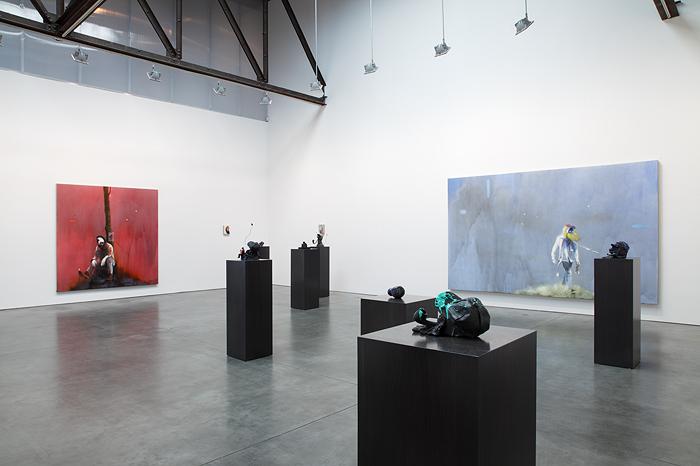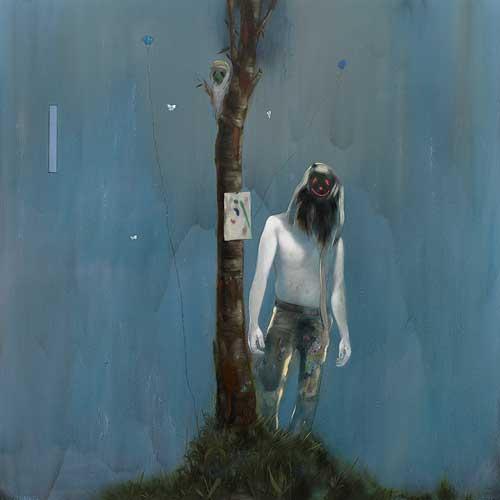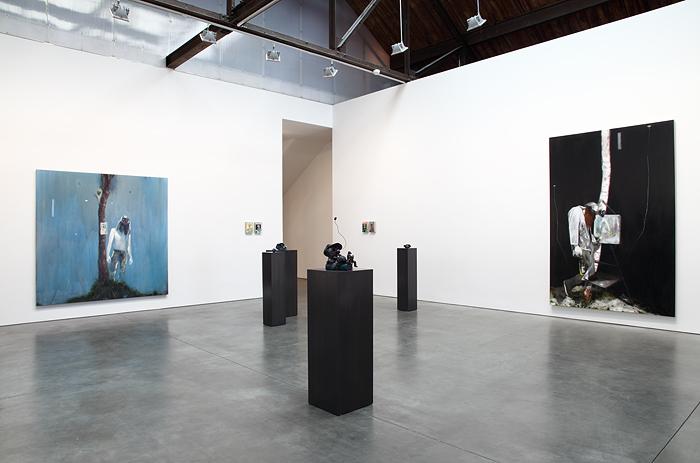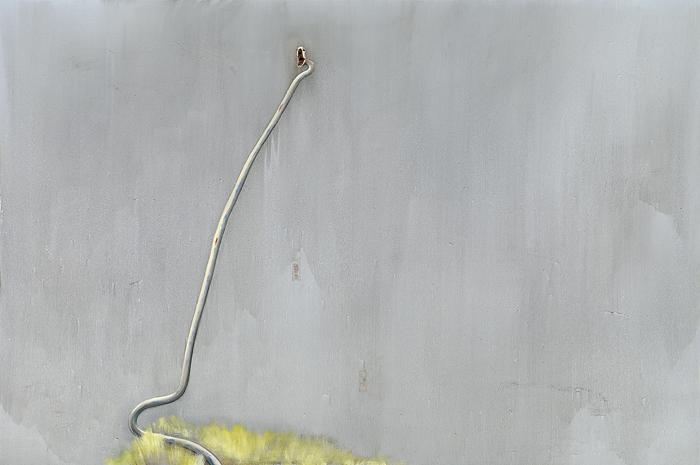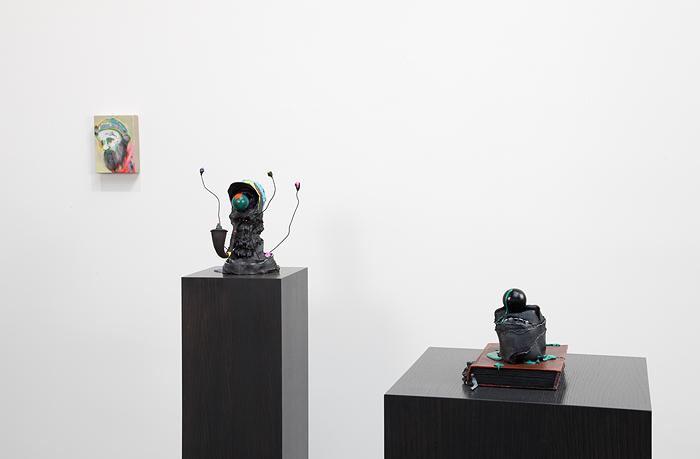Nigel Cooke
April 24 – June 13, 2009
Main Gallery
Nigel Cooke has always possessed an innate passion to evolve and his new work wonderfully demonstrates this honed excellence in spades.
There is a consistently abundant amount of energy and support around Cooke's work. This has partially been attributed to his complete uniqueness and, of late, an awe of his tireless reworking of each painting, even at the expense of obliterating entire layers. All of what he knows fuels him to continue to evolve his practice. The revolutionary bravery of reworking has transformed now into a new type of risk that derives from making some smaller paintings in one sitting. A new and equally intense act of labor now exists and the results are ripe with a purity and deftness that has been informed by Cooke's experience with immediacy. This physical making of the work is one significant leap that Cooke has taken and yet there is a second; the role of the image has also transformed. These parallel progressions simultaneously unfold.
Ever known for his rigorous intellect, Cooke describes his investigation as having grown from a question of "where is painting?" to "who is painting"? This evolution of subjectivity springs from Cooke's newfound reckoning that he and the paintings are made of many states, not all of which may be within his control or active consciousness but retain the accumulation of years of thinking about and making paintings. In a series of large canvases, expansive jewel tone washes lay behind lone male figures. Occasionally propped against trees or striding over grassy hills, sporting wild beards and bandaged heads, these artists or philosophers appear with examples of their work nearby. Those familiar with Cooke's past work will see a visual continuation of his language and subject; however a radical progression has occurred that has been nearly indescribable for Cooke. Throughout his work, the figure has had a presence although always a metaphorical one. First appearing as graffiti or drawing, then progressing into anthropomorphized vegetables and then into ghost-like figures - these were intellectual symbols of a universal past and Cooke's identity as an artist. No longer symbolic, the depicted figures now have their own life born of a direct relationship with painting itself. The immediacy of making these paintings has forced Cooke to disconnect his eager subjectivity and the figure is allowed to emerge as something bigger than Cooke's own intentions. He has expressed: Some of the characters have painted their own paintings. What does an internal painting represent in a world made of paint? Is their painting better than the one they are living in? Have they created a better image than the one they themselves consist of? Can I do two paintings at once? If paint can describe a tree and a man, then what happens when it describes a painting? These questions of authorship and duality in the past were brought up by the graffiti element in my work. This is more self-reflexive. The figures describe a creative state of mind through their own actions. It's both them and painting itself that stare back at Cooke as he is sorting out the making. Other paintings like "Blind Snake" and "Dead Owl" depict a breed of outcast fauna, which are perhaps distant cousins of the men and confront a similar cataclysm of identity and place.
Cooke's practice has expanded beyond painting and drawing; the new show also includes a series of small bronze heads. These charred effigies made from wads of clay, wire wool, plastic food, cigarettes, pipes, baseball caps, fat clown noses, bones, brains, toys, bandages, and blobs of paint are amazingly compelling, disturbing, and humorous. Shamelessly absurd, splats of blue paint over blackened bandages can combine with a bright slice of tomato as an ear. There is the impression that these men were disinterred from the world of the paintings and then vandalized. The heads represent a further expression of Cooke's newly manifest fluidity and amplify the psychological sport he orchestrates.
The constant whirring of Cooke's mind combined with his physical talent has again provided a challenge and an opening for the viewer to expand consciousness as well. That he has allowed his thinking-self to surrender control has only deepened the complexity of the experience. This exhibition marks a simultaneous culmination and crossroads for Cooke, which we are excited to witness.
This is Nigel Cooke's third solo exhibition at Andrea Rosen Gallery. He was born in Manchester, England, in 1973. He holds an MA from the Royal College of Art and a PhD from Goldsmith's College, London, and now lives and works in Kent. Cooke has shown at Tate Britain and at the South London Gallery. His work is in the collections of the Tate, MoMA, The Guggenheim, and LA MoCA.
For more information and images please contact Renee Reyes at r.reyes@rosengallery.com
